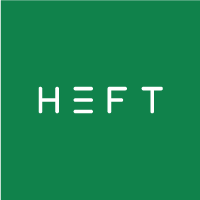The HEFT systems can be applied to all pigs and poultry.
The HEFT on-farm systems are designed for use as a first-response solution for animals requiring euthanasia due to illness, injury, or other non-viable conditions in daily production. These systems are capable of processing single animals or groups.
The HEFT emergency response system is intended for deployment to specific locations to handle larger groups of animals. It is utilized in scenarios such as depopulating an infected flock, preventing disease transmission, and other situations necessitating the depopulation of a flock.
The systems must not be overloaded, the animals shall have room to stand and fall freely. Due to variations in animal sizes and available space in different systems, providing an exact number is challenging. However, as a reference, the transportation regulation, Council Regulation (EC) No 1/2005, can be used as a reference. It is recommended to load fewer animals than what is stipulated in the regulation to ensure optimal conditions.
The H1 is designed for the early stages of pig production and poultry. The C1 is designed for pigs and larger poultry.
For more information see the “animal area” dimensions for each product.
Nitrogen due to its inert, tasteless, and odorless nature facilitates more humane stunning. Anoxia refers to an environment that has a total lack of oxygen. When animals are exposed to the environment they will rapidly lose consciousness without additional stress or pain. Which is why it has been recommended for stunning animals.
Anoxia shall not be confused with hypoxia, which refers to a partial lack of oxygen. An animal exposed to a hypoxic environment will sense the shortage of oxygen and experience difficulties breathing and stress.
Read more about how HEFT utilize high-expansion foam to obtain an anoxic atmosphere here.
The animals transition into the anoxic environment as the foam surpasses their heads, which occurs within a matter of seconds.
Besides the commercial aspects such as price and supply, nitrogen is a tasteless and odorless gas with inert properties, meaning it lacks chemical or biological reactivity and does not interact with other elements or gases. Consequently, it does not provoke aversive reactions.
There are well-documented animal welfare hazards related to carbon dioxide such as provoking aversive reactions like respiratory distress and burning sensation. Carbon dioxide is an acidic gas that when inhaled, reacts with water molecules in the mucosal tissues forming carbonic acid, causing irritation of the nasal mucosa and the induction of unconsciousness is associated with breathlessness and hyperventilation.
The filling time without animals in the container remains constant; however, the filling time when the container is loaded with animals may vary slightly and is dependent on the stocking density. The systems maintain a technical filling time of approximately 10 seconds, depending on the system’s design. On average, the filling time with animals present is up to twice the technical filling time, typically shorter.
From an animal welfare perspective, a faster filling time is preferred. The displacement rate of the gas is important for the well-being of the animal.
The HEFT foam bubbles are brittle and break upon contact, preventing their entry into the mouth or nostrils.
Once the process is completed, resulting in an oxygen concentration of less than 2%, the animals must remain in the anoxic atmosphere for 5 minutes.
Bursting the foam serves to improve the process for both animals and operators. It reduces the duration of contact with the foam, eliminates the risk of air pockets, and ensures a homogeneous anoxic atmosphere with a maximum of 2% oxygen, enabling precise oxygen measurement. Additionally, it provides full visibility for the operator to easily monitor the animals’ responses throughout the process.
The foam is designed to be very light and brittle, thus leaving minimal impact on the animals.
Gas and foam agent consumption can be found on each specific product page.
The on-farm systems are ideally operated with 200/300 bar cylinders.
The emergency response system is ideally operated with a nitrogen tube trailer or liquid nitrogen with a vaporizer.
The systems have a built-in window for observation of the animals during the process.
Yes, our systems have a built-in window for observation of the animals during the process. There is also an outlet for an oxygen sensor to monitor the oxygen levels in the system.
Contact us
If you have any questions, you are welcome to contact us.
Customer support : Mon – Fri | 08:00 – 16:00

